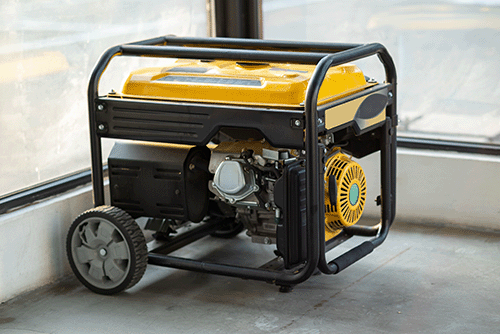Partner with Downstream

When it comes to tenant improvement (TI) or interior renovation work, jobsite logistics can be trickier than many anticipate. Unlike ground-up construction where you can plan for utilities from day one, interior projects often begin in a space that’s technically inside but functionally disconnected from basic necessities—no power, no water, no restrooms, and definitely no climate control. That’s where temporary utilities and construction site services come in. These essential setups keep your project moving while the permanent systems remain offline or incomplete. In this post, we’ll break down the core services to consider, how to plan for them, and how Downstream can help you get set up quickly with the right temporary solutions.

Interior renovations don’t start with a blank slate—they often begin in a partially finished, sometimes occupied building with limited access. This puts pressure on field teams to establish temporary infrastructure for things like:
Not only are these critical for worker productivity and safety, but they’re also often required by OSHA and local codes to maintain compliance during construction activities. Even a one-week delay in setting up basic power or lighting can ripple through a tightly sequenced TI schedule.

Temporary power is usually the first utility your crew will need. Whether you’re cutting walls, running scissor lifts, or charging cordless tools, power is non-negotiable.
Options include:
Coordinate early with base building management on electrical access points or permission to tap into house power.
For safety and code compliance, consult osha.gov and nfpa.org for guidance on temporary wiring and electrical safety.
When TI work involves demoing drywall, framing, paint, flooring, or anything that releases particulates or fumes, you’ll need ventilation—especially in sealed commercial buildings.
Depending on the season and type of space, you might need:
This is especially critical in phased renovations or occupied buildings where tenant comfort and indoor air quality are factors.
Also keep in mind that some landlords prohibit connection to the base building HVAC until the project reaches a certain milestone—making temporary equipment your only option for weeks or months.
When working in buildings where restrooms are offline, locked, or too far away, you’ll need to provide jobsite sanitation for your team.
Common options include:
Most jurisdictions require a set number of facilities based on headcount, and failure to provide them can lead to fines or shutdowns.
See osha.gov for the sanitation requirements specific to construction.
If your renovation requires floor prep, masonry work, dust control, or fire protection work like core drilling or sprinkler installation, temporary water hookups may be needed.
Where potable water is unavailable, mobile water tanks or pumping stations can be brought in. Be sure to:
Beyond the “big three” of power, HVAC, and restrooms, TI jobs may also require:
At Downstream, we understand the logistical challenges of interior buildouts. Unlike greenfield sites, tenant construction demands quick mobilization, flexible delivery, and minimal disruption to surrounding tenants or operations.
We supply and coordinate:
Let our team help you line up the right equipment at the right time—no delays, no hassles. Learn more at trydownstream.com.
Temporary utilities and jobsite services are more than a checklist item—they’re the backbone of a smooth TI project. Without power, light, fresh air, or a place to wash up, your schedule can quickly unravel.
Whether you’re renovating a single floor or an entire building, plan your temporary setup early. Talk to building management, lock in your utility vendors, and make sure your crews have what they need to hit the ground running.
And when you’re ready to source temporary jobsite equipment, remember: Downstream has your back.
-min.webp)
Quis nostrud exercitation ullamco laboris nisi ut aliquip ex ea commodo consequat. Duis aute irure dolor in voluptate.
